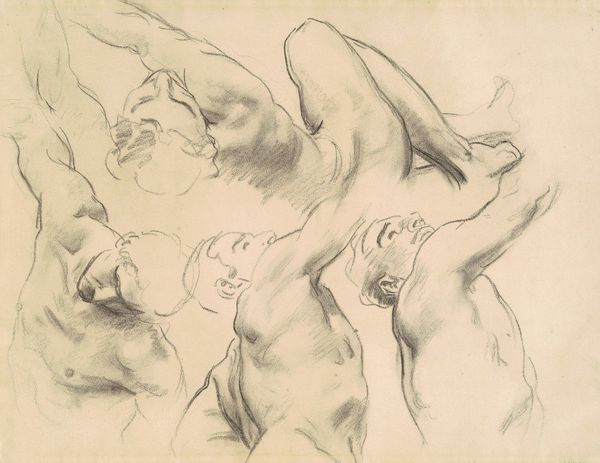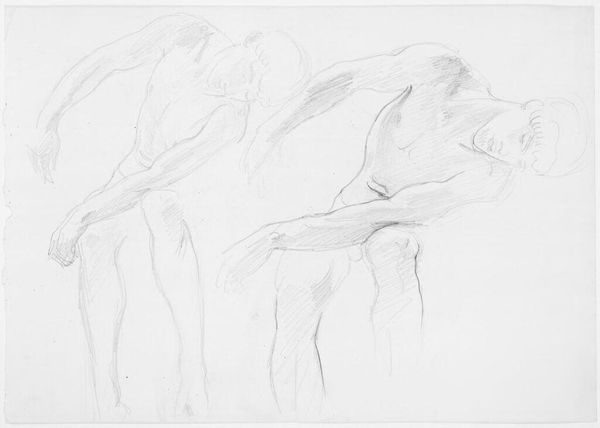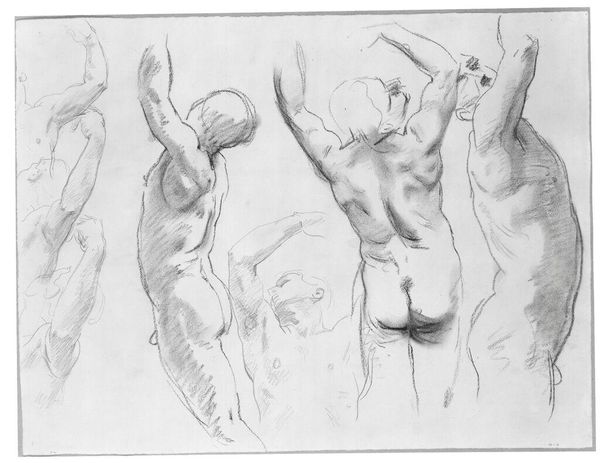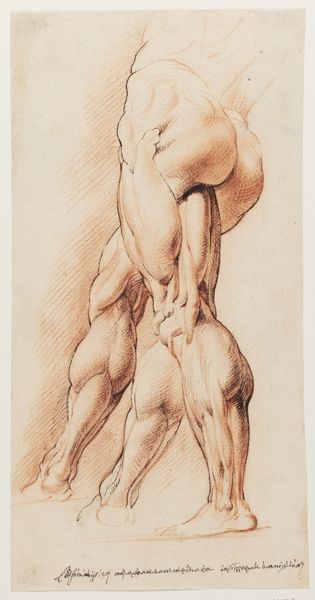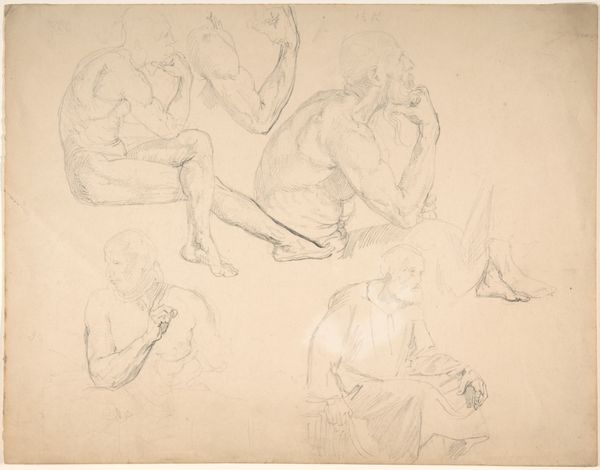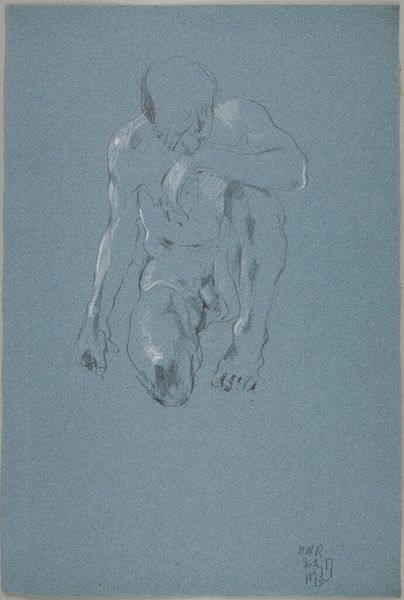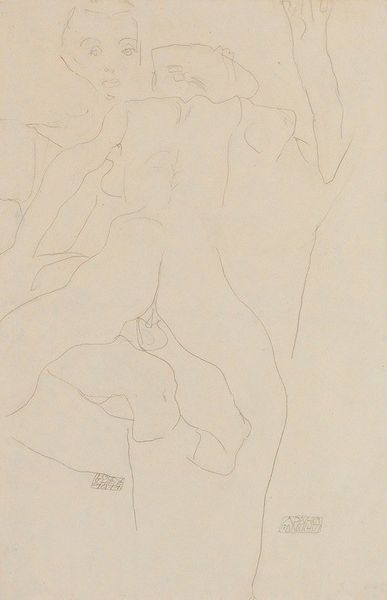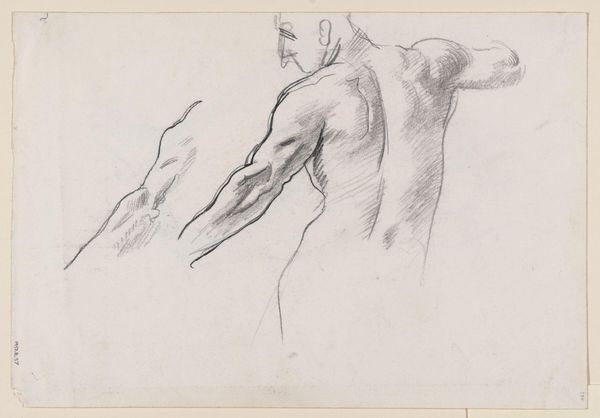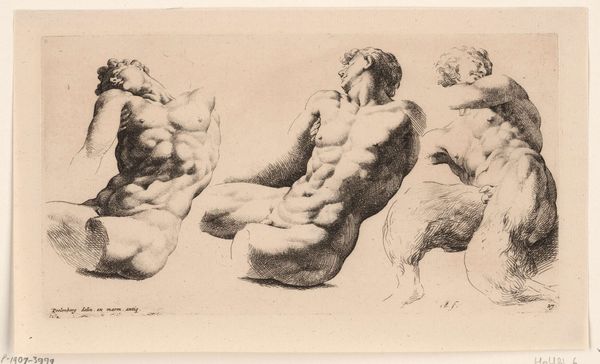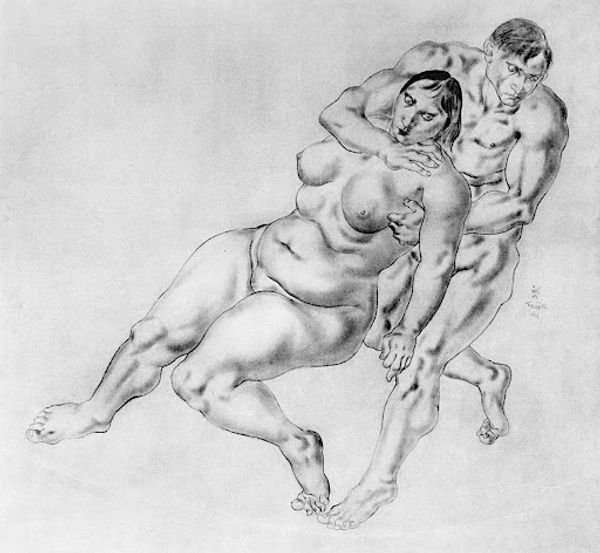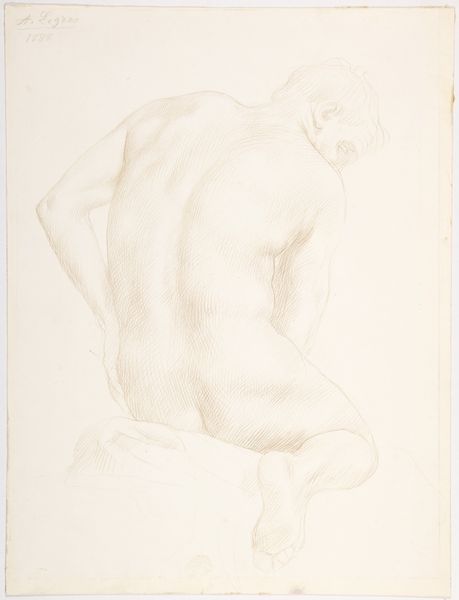
drawing, pencil
#
drawing
#
figuration
#
pencil drawing
#
group-portraits
#
pencil
#
nude
Copyright: Public domain US
Curator: The earthy tones and powerful figures immediately evoke classical sculpture. Editor: Absolutely. Let’s delve into "Group of Nude Figures," a pencil drawing created around 1920 by Olexandr Archipenko. It’s striking how he's reduced form to almost geometric planes. Curator: Yes, Archipenko’s connection to Cubism is palpable. One can trace the influence of the avant-garde's revolutionary efforts to deconstruct the figure, mirroring societal shifts and emerging views of the body freed from restrictive norms after the first World War. What about their interaction, that tension of the reaching arm? Is there a power dynamic expressed between those forms? Editor: The cross-hatching creates such depth and musculature. And note how the figures meld—observe how Archipenko blurs conventional lines between forms to achieve an intriguing formal dynamism; his strategic obscuring hints toward the conceptual and the incomplete. Curator: Given that this piece was crafted during the interwar period, the bodies themselves seem charged—testaments of strength rising out of ruin, perhaps emblematic of the aspirations for a more liberated society amidst political changes in Europe. Editor: The absence of individualized faces draws our attention to the abstract—forms and shapes speak more loudly than personality. Consider the semiotic effect: by suppressing individuality, it amplifies an exploration purely around body, proportion, and dynamism, inviting us to dissect the foundational visual lexicon governing aesthetic. Curator: It feels very intentional, perhaps reflective of anxieties prevalent during post-war recovery efforts when populations questioned established roles, and even wrestled with gender identity boundaries. Editor: I’d agree it encourages introspection around how structures – physical or societal—are fabricated or dismantled based on pure aesthetic principles or inherent utility and potential. It has made me reconsider how the physical vocabulary present encourages alternative ways to view form and figure arrangements! Curator: Absolutely—it’s been illuminating to see how this historical piece speaks directly into today’s conversations around identity and freedom, viewed through its abstract forms.
Comments
No comments
Be the first to comment and join the conversation on the ultimate creative platform.
